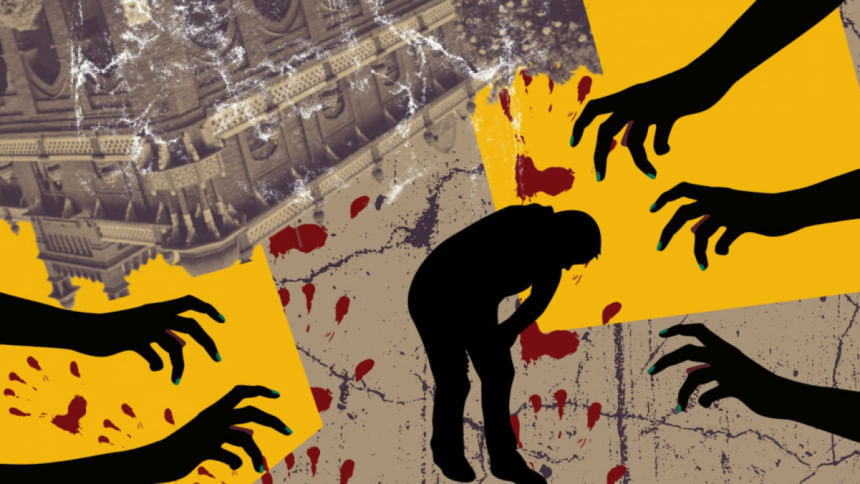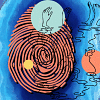Is humanity disintegrating, or is violence simply more visible?

This video keeps replaying in my head: a school field in Taraganj, Rangpur; two men hauled onto a van; a crowd forms; phone flashlights stab the night; cheers rise as kicks and punches fall. Police blow a whistle, then melt away. Someone yells, "Push down, push down," as the van is toppled onto the bodies. Two lives snuffed out amidst frenzy. Public execution dressed up as "mob justice." This clip ricocheted across social media in Bangladesh like a dare: look, then keep scrolling.
So, is humanity disintegrating? Are we becoming more desensitised to such violence? Or has it always been this way, only now the atrocity appears on our feed during breakfast? The uncomfortable answer is both simple and messy: the baseline of human violence has fallen over centuries, yet we are living through noisy spikes and watching them in high definition. Homicide data, collected over the decades, shows staggering declines from medieval times to today; it is hard to fathom how violent the past actually was. But "decline" does not mean "extinction," and progress is jagged, not linear.
In 2021, an estimated 458,000 people were killed in homicides worldwide. Africa bore the highest number of victims; the US had the highest rate. And war? The Uppsala Conflict Data Program (UCDP) reports a record 61 active state-based conflicts, and 11 of these reached the level of war, with nearly 160,000 people killed in organised violence. Last year was the fourth most violent since the 1994 Rwandan genocide. Ukraine remained the deadliest, with about 76,000 battle-related deaths, while Israel's offensive in Gaza and its war against Hezbollah in Lebanon accounted for roughly 26,000 deaths.
If the macro picture is mixed, the micro experience is intimate and relentless. We witness violence now, over and over, through a screen we cannot easily put down. Psychologists have long warned that repeated exposure to violent media can desensitise viewers; results vary on whether it makes people more aggressive, but the numbing pattern is real. Pew's 2025 survey finds teens increasingly believe social media harms people their age. This comes from the generation born inside the algorithm.
There is also the trick our brains play on us. The availability heuristic makes us overestimate the prevalence of whatever we have just seen vividly and repeatedly -- a lynching video, for example. Studies show that changes in media diets can shift public fear: when people consume less crime-saturated media, their perceptions of crime fall. Which is not to say the fear is fake; it is to say the feed is not a mirror, it is a magnifying glass.
Bangladesh's recent spike in mob violence is not just "ancient cruelty" resurfacing; it is digitally choreographed. The Taraganj video shows the crowd filming as they strike, performing for an imagined audience beyond the field. Social media does not just document the violence; it scripts it.
So no, perhaps humanity is not uniformly disintegrating. Rights, courts, and social norms have, over the long run, reduced the everyday lethality. But that framework crumbles where institutions are weak and where bystanders outsource conscience to the crowd. The modern twist is visibility. Lynchings once required a town square; now the town square fits in your palm. When the feed becomes the forum and the verdict arrives before the facts, "justice" is whatever the loudest chant decides. Meanwhile, the rest of us become voyeurs -- horrified, slightly numbed, and permanently online.
What to do with that despair? Hold two truths at once: violence has fallen over centuries, but right now, it is brutally bad where it counts. Data does not cancel grief; it cautions us against fatalism. Treat social media platforms as engineered environments, not inevitabilities to endure. Slow virality, throttle rumours, punish incitement, protect due process. And maybe, just maybe, stop sharing the gore.
Most of all, choose the opposite of the crowd. Shouting "enough" is unfashionable and sometimes dangerous, but it is the only way the long arc continues bending our way. History suggests we can be better. That video begs us to prove it. Offline, in the hard place, when it counts.
Karim Waheed is digital content strategy lead at The Daily Star.
Views expressed in this article are the author's own.
Follow The Daily Star Opinion on Facebook for the latest opinions, commentaries and analyses by experts and professionals. To contribute your article or letter to The Daily Star Opinion, see our guidelines for submission.

 For all latest news, follow The Daily Star's Google News channel.
For all latest news, follow The Daily Star's Google News channel. 










Comments